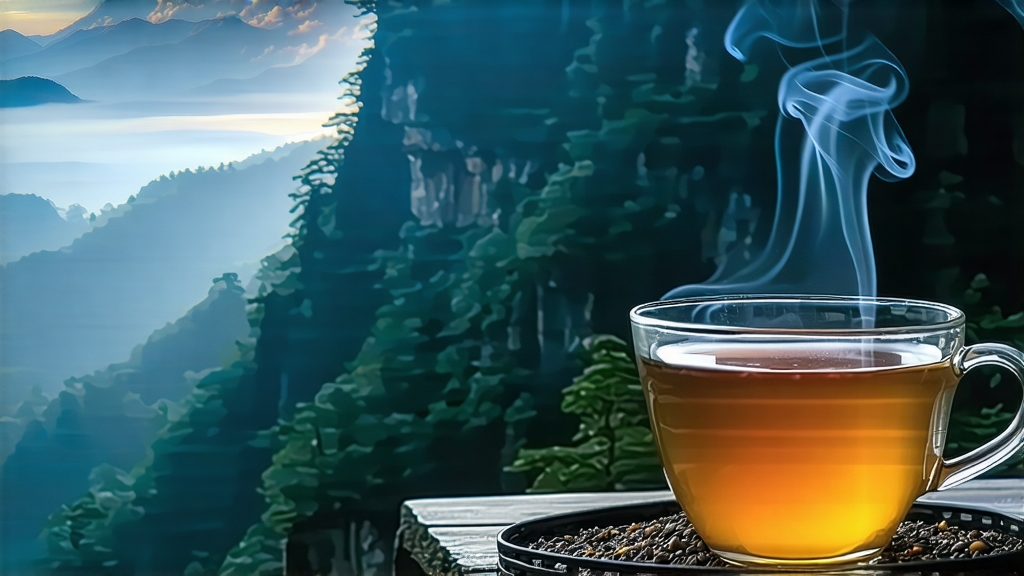
Long before English breakfast blends and Victorian porcelain, a small-leaf camellia variety growing in the rocky Wuyi Shan of northern Fujian was about to become the first intentionally crafted black tea on earth. Locals call it Zheng Shan Xiao Zhong—“small plant from the original mountain”—but the outside world knows it as Lapsang Souchong, the tea that taught Europe the taste of smoke and malt and launched a two-century obsession with “bohea.” Its story begins in the late Ming dynasty, around 1600, when passing armies forced farmers to hasten drying over fresh pine fires. The accidental infusion of resinous sweetness proved so popular that smoke became protocol, and a new category—hong cha, red tea—was born. By the early Qing, Dutch and later British merchants were hauling chests of “Lapsang” through Xiamen to Batavia and then to London parlors, where it perfumed the air of coffee-houses and inspired the first adulterated “English” blends. Today the same protected geographical indication (PGI) covers only the 600–1 200 m core zone of Tongmu Guan, a mist-locked gorge where granite cliffs filter humid air into the ideal withering chamber for tea leaves.
Two distinct styles now share the name. Traditional Lapsang Souchong is withered over local Masson pine embers, rolled briefly, oxidized in bamboo baskets, then hot-smoked in wooden sheds called qinglou. The smoke must be gentle—too hot and the leaf sugars carbonize, too cool and the aroma turns acrid—so artisans feed the fire every twenty minutes through the night, judging readiness by the shine of the leaf and the scent that clings to their sleeves. The newer “unsmoked” or “craft” version, favored in China’s domestic market, omits the final smoking, relying instead on long withering, slow charcoal baking, and precise oxidation to coax natural lychee-and-honey notes. Both styles are made only from the small-leaf Da Bai varietal picked in the short spring window before Qingming; a single kilo requires roughly 55 000 buds.
Processing follows five meticulous steps. 1) Picking: one tender bud plus the first two leaves, taken before 10 a.m. while dew still guards against mechanical bruise. 2) Solar withering: leaves are laid on bamboo screens angled toward the southeast sun for 45–60 minutes, then moved to the cool shade of the qinglou where pine embers smolder below raised mesh trays. 3) Rolling: forty minutes of light pressure to rupture cells without shredding the leaf; the aroma shifts from grassy to baked apple. 4) Oxidation: baskets are stacked in a humid 24 °C room for 3–4 hours; the leaf turns a uniform coppery-chocolate and releases a sweet raisin perfume. 5) Smoking or baking: traditional lots receive twenty minutes over 70 °C pine smoke, rest for two hours, then repeat up to eight cycles until the moisture falls below 7 %. Craft lots instead enter a 60 °C charcoal oven for three slow passes, each followed by a 12-hour “sweetening” rest that allows residual enzymes to round the cup.
To brew Lapsang Souchong like a Tongmu native, start with soft mountain water; London tap will flatten the finish. Heat porcelain gaiwan or thin-walled glass to 95 °C, use 3 g leaf per 100 ml, and rinse for just three seconds to awaken the ember aroma without washing it away. First infusion: 8 seconds, tilt the lid to let smoke escape, then sip. The liquor should glow like antique mahogany and carry a top note of pine resin quickly followed by longan, dark cocoa, and a cooling camphor tail. Second infusion at 12 seconds often reveals a surprising floral lift—wild cliff orchid, locals insist—because the sudden heat shocks latent terpenes. Push to six infusions, adding three seconds each time; by the fifth the smoke recedes and a clean malt sweetness lingers like burnt sugar on a campfire pan. Western drinkers may prefer 2.5 g per 250 ml in a pre-warmed ceramic pot, 3-minute steep, splash of milk if you must, but know that dairy softens the smoke into bacon-like umami that Victorian ladies adored.
Professional tasting follows the Chinese “5-factor” sheet